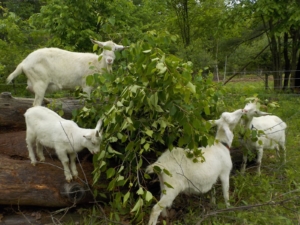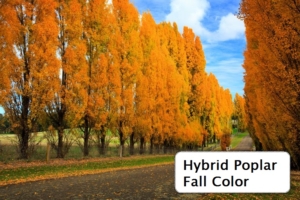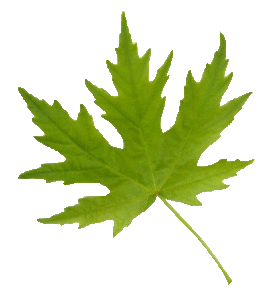Why You Should Plant Fodder Trees!
 I’ve given several classes and presentations on the benefits to adding fodder trees to your homestead. You can eliminate outside feed costs in most situations just by implementing cut and carry fodder. Dozens of small producers across the USA and thousands in europe following old traditions feed their livestock exclusively from pasture and “tree hay”. Midwest Permaculture has a great article on Pollarding. Here’s a great video on the process and history.
I’ve given several classes and presentations on the benefits to adding fodder trees to your homestead. You can eliminate outside feed costs in most situations just by implementing cut and carry fodder. Dozens of small producers across the USA and thousands in europe following old traditions feed their livestock exclusively from pasture and “tree hay”. Midwest Permaculture has a great article on Pollarding. Here’s a great video on the process and history.
I hope you already know all about this method of feeding fodder and are eager to get started with your own home grown money printing trees like I am!
If you think of it like this, you work in exchange for money, the idea is to hold onto as much of that time and energy in the form of cash as you can. Doing so makes us more wealthy, because we keep more of that time and energy (money) in our possession, allowing us to make it work for us and build more resiliency in our lives. So why are you keeping rabbits, or sheep, or goats, or cows and buying grain or pellets to feed them? Is that sustainable? What if you don’t have the money to do so one month because you lost your job or were injured and couldn’t work? What if there was some regional disaster and supplies dried up, or what if something worse happened? Where would the grain and pellet food come from?
Instead of relying on giving your money to a big agri-conglomerate for the garbage, pesticide infused, GMO soy and corn feed, why not grow your own that’s healthier for your animals and better for you? Maybe you like eating meat and dairy that still has traces of Glyphosate in it from the food your animals ate… Link here. Or you might be interested in this study linking the herbicide with breast cancer. I don’t know for sure but I prefer to err on the side of caution and try to eliminate toxins from my food. Maybe you think that stuff doesn’t belong in your food. I know I don’t want it in my food or my body.
I personally want to grow as much of my animal’s food as is humanly possible. For the health benefits, the monetary benefits, and the buildup of healthy soil on my land. That’s what it means to grow your own fodder. Plant these trees and start managing them to produce an abundance of food for your animals. I’ll even have classes on how to take cuttings of these trees and turn them into new trees so you can expand your fodder production and grow that ability to make your own livestock feed exponentially.
Your parents might have told you that money doesn’t grow on trees. I say they were wrong. If you grow your own animal feed, and you stop buying that animal feed, you get to keep all that money in your pocket. It’s almost like money does actually grow on trees!
Some of you have also asked for some hardy fruits that you can start or expand your own home orchard or berry patch. Well I have two fantastic selections for you that come with a lot of history and are both great, hardy plants that should be easy to grow for even those who have a black thumb!
I’ve scoured the web checking prices and these are actually wholesale or lower than wholesale prices, I just looked up prices as I’m writing this and I literally can’t find a better deal than this online. I’ll include wholesale and retail prices so you can compare on the sales pages for each item.

Fodder Tree (Or Chop & Drop) Package:

Comprised of bare root trees trimmed down to 1’-2’ for easy shipping and to promote better growth after planting. You would be trimming a taller tree down to this size anyways so I’m saving you the work.
These are all the exact same trees I’m currently planting to develop a NEW, fast growing high protein fodder/mulch growing system for all my future herbivores and to build soil and mulch my garden. These are some of the top selections for trees I suggest to almost all my clients. If you heard my presentation on raising meat rabbits or tree fodder at the TSP fall workshop, these are the fodder trees I mentioned.
White Mulberry – Morus alba

Arguably the best fodder tree you can grow for just about any animal that eats leaves. High digestibility, high protein, holds protein for a long time through summer, fast grower, hardy and resilient. Links research, articles and white papers here, here, here, here, here. As with all these fodder species, mulberry makes fantastic compost or mulch. Even if you don’t have a machine to do the mulching for you, at the very least you can cut into small enough pieces to lay flat or close to the soil to serve as rough mulch in a chop and drop usage. High protein means lots of nitrogen available for bacteria and things like earthworms to grow and thrive on. You can almost exclusively feed most livestock on nothing but white mulberry. If you have so much growing that you don’t need it as winter storage tree hay, fresh feed for animals, biochar to build soil carbon, earthworm food, mulch for your garden, then the very last thing you can do with it is chop it into rough mulch to go under the trees themselves, or under other fruit trees.
Hybrid Poplar – Populus x sp.
 Grows like a weed and handles being coppiced and pollarded exceedingly well. Great results feeding rabbits, goats, and sheep a diet of Hybrid Poplar, almost equivalent to alfalfa in most respects. Probably my #2 for all around best fodder leaf for the broadest range of the USA. Also because of it’s rapid growth and high protein content, that means it has great nitrogen available to build healthy soil. Added to that is the fact that it’s a fantastic solution to heating your home. It on average has half the BTUs of Oak, but grows at more than triple the rate, making it feasible to heat your home on FAR less acreage by growing your own firewood. Again, because of it’s growth rate and ease of cutting the wood, it lends itself tremendously towards creating your own wood chips for mulching your garden, paths, chicken yards, bedding for animals, or any other use you can put wood chips towards such as woodgasifiers to power your home or even simple biochar to remediate contaminated soil, or to build fertile soils that will stay fertile for generations. I dare you to read those articles and decide it’s not worth growing the trees.
Grows like a weed and handles being coppiced and pollarded exceedingly well. Great results feeding rabbits, goats, and sheep a diet of Hybrid Poplar, almost equivalent to alfalfa in most respects. Probably my #2 for all around best fodder leaf for the broadest range of the USA. Also because of it’s rapid growth and high protein content, that means it has great nitrogen available to build healthy soil. Added to that is the fact that it’s a fantastic solution to heating your home. It on average has half the BTUs of Oak, but grows at more than triple the rate, making it feasible to heat your home on FAR less acreage by growing your own firewood. Again, because of it’s growth rate and ease of cutting the wood, it lends itself tremendously towards creating your own wood chips for mulching your garden, paths, chicken yards, bedding for animals, or any other use you can put wood chips towards such as woodgasifiers to power your home or even simple biochar to remediate contaminated soil, or to build fertile soils that will stay fertile for generations. I dare you to read those articles and decide it’s not worth growing the trees.
Weeping Willow – Salix babylonica

In brief, the willow should be a component of daily fodder as it helps to reduce pest issues in rabbits, goats and sheep as well as being very palatable to them. Good protein and digestibility. Has many other good uses like biochar, chop and drop mulch, wood chip mulch, making natural rooting hormone, live stake erosion control and many more!
Plant a fodder/chop and drop system this year!
You can start harvesting a little in a year. By 3-5 years if you’re pollarding or coppicing every winter, you should be producing enough to feed a significant number of herbivores. We’re talking about all your rabbit food, or enough to supplement a great portion of the diet of a small flock of goats/sheep or a family milk cow, heck even pigs will go hog wild on the cut leaves!
The best time to plant these is NOW, don’t wait until you absolutely need the fodder, do it NOW! In as many years as I’ve been consulting and helping people to design resiliency into their homesteads and farms, nobody has ever said they regretted planting fodder trees. And remember, even if you don’t need it to feed to animals now, you can still be using all this cut leaf and stem matter to chop and drop to build fantastic soil! The high protein leaves will feed earthworms and other soil organisms just as well as it feeds herbivores. These are fast growing trees and will produce tons of organic matter to add to compost piles, mulch for your garden, or just chop and drop onto swale mounds to build healthy soil for future use.
